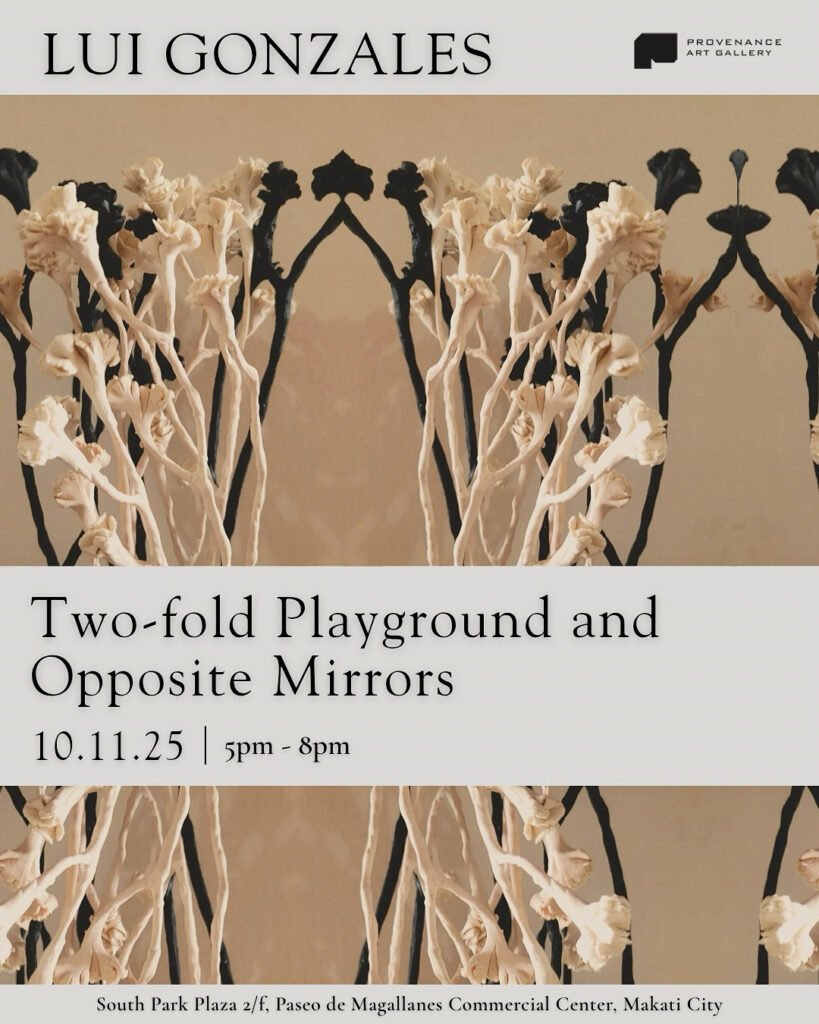Two-fold Playground and Opposite Mirrors
By Lui Gonzales
Upon examining the body of work of visual artist Lui Gonzales, it becomes apparent that the trajectory of her artistic explorations—whether it be in the visual arts or in music—has always moved towards an examination of the self within its environment and how our identities are often formed by these observations. For the artist, it is a personal inquiry that has extended to her own artmaking process, resulting in a method of creation that is heavily informed by an introspective approach. Through her eyes, the world is rendered in minute detail on layers of tracing papers, torn at parts to allow subjects and images to bleed and blend through one another. While the subjects reveal themselves as almost ordinary, what’s notable is the way that she composes them to form the final work—in layers and across each other, patterns alternating between and beneath. For Gonzales, a sense of awareness and intent seems to punctuate her works.
For her solo exhibition Two-fold Playground and Opposite Mirrors, Gonzales explores the idea of a divine dichotomy—a philosophical concept that refers to how two contradictory things can not only coexist but also complement one another in particular ways, as seen in the softness of flesh and the hardness of bones—both of which are essential for a body to function. Looking once more at her surroundings, she seeks to identify how this dichotomy manifests in the natural world. Integrating clay sculptures to her drawings, the works alternate between the two-dimensional and three-dimensional planes and underscore how the contrasts between these elements serve to highlight their respective forms—from the silhouettes of the blooming flowers and the contours of the artist’s sculptural self-portraits, to the intricate drawings of fish scales, the firm veins on leaves, and the soft shadows in between petals of flowers. Together, the subjects allude to a sense of interdependence—a manner of subconscious communication between organisms in which they each become essential for the other’s survival.
However, beyond simply acknowledging this dichotomy and recreating them on paper and clay, the works are also an ongoing response by the artist to this concept. Organic forms such as flowers have been transformed into inorganic sculptures of clay—a nod towards the human capacity to mimic in order to remember. The flowers are depicted in the act of blossoming, signaling growth and the passage of time. In the work Time Capsules, Gonzales places these flowers within glass tube casings, referencing our tendency to confine the things we see around us into vessels through which we are able to preserve them. Overall, this act of superimposing—both the layers of tracing paper and materials such as clay and paper—becomes a form of observational self-examination, where the artist not only creates art as a reflection of her surroundings, but also as a means to understand the way these systems of coexistence work. Two-fold Playground and Opposite Mirrors suggests that this divine dichotomy ultimately stems from the human condition to observe—and at times, intervene with—these contrasts within our surroundings, which in turn shape and influence our own identities.
Written by Elle Lucena
